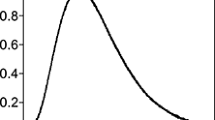Abstract
An appraisal is presented for four different methods that are usually incorporated in thermal simulators to estimate the rate of heat loss to surroundings. The methods are the analytical solution using a superposition theorem, the analytical solution using a numerical approximation to the convolution integral, the semi-analytical solution, and the numerical solution. This appraisal includes expressing the equations in a form that can be incorporated into a fully implicit simulator, computer programming complexity, and the computer CPU time and memory storage requirements. A steam flood problem is used for the comparison, and the gas recovery, oil recovery, and heat loss performances for a reservoir in one and two dimensions are presented.
It is found that the numerical solution is sensitive to grid size in the overburden, the semi-analytical solution is the simplest to program but its prediction is the least accurate, the analytical solution is the most expensive, whereas the analytical-numerical solution combines both accuracy and acceptable storage requirements, and therefore, it is recommended for use in thermal simulation.
Similar content being viewed by others
Abbreviations
- A :
-
area [m2]
- a m :
-
mth value of a function defined by Equation (15)
- B m :
-
mth convolution integral defined by Equation (14)
- b :
-
constant
- c :
-
specific heat capacity [J/(kg · K) ]
- I :
-
function defined by Equation (22) or (25)
- i :
-
index for time
- K :
-
thermal conductivity [J/(m · d · K)]
- k :
-
upper limit form=14 or 25
- l :
-
penetration depth [m]
- N o :
-
number of grid blocks in overburden
- N b :
-
number of boundary blocks through which heat loss takes place
- N max :
-
maximum number of anticipated time steps
- n :
-
number of time steps
- p :
-
parameter defined by Equation (20)
- Q L :
-
cumulative heat loss
- q :
-
parameter defined by Equation (21)
- q L :
-
instantaneous rate of heat loss [J/d]
- ¯q L :
-
average rate of heat loss [J/d]
- q *L :
-
function defined by Equations (7), (10), (12), (23) or (30) [J/d]
- T :
-
temperature in overburden [K]
- T o :
-
initial temperature [K]
- T r :
-
temperature of reservoir boundary block [K]
- t :
-
time [d]
- Z :
-
distance in overburden [m]
- α :
-
thermal diffusivity [m2/d]
- γ:
-
boundary between reservoir and overburden
- δt :
-
time step=t n1−t n[d]
- δT :
-
temperature difference=T n1−T n[K]
- ρ :
-
density of overburden rock [kg/m3]
- θ :
-
T (Z, t)−T o [K]
- θ r :
-
T r(t)−T o [K]
- 0:
-
initial condition
- i :
-
time level
- L :
-
loss
- m :
-
index
- max:
-
maximum
- n, n+1:
-
old and new time levels
- r :
-
reservoir at boundary
- v :
-
iteration number
References
Abou-Kassem, J. H., Investigation of grid orientation in a two-dimensional, compositional, threephase steam model, PhD thesis, University of Calgary, 1981.
Souza, A. L. S., Pedrosa, O. A. Jr., and Marchesin, D., A new approach for calculating formation heat losses,Proc. 2nd Internat. Symp. for Enhanced Oil Recovery, Maracaibo, Venezuela, 1987.
Vinsome, P. K. W. and Westerveld, J.,J. Can. Pet. Tech. 19(4), 87 (1980).
Coats, K. H., George, W. D., Chu, C., and Marcum, B. E.,AIME Trans. 257, 573 (1974).
Shutler, N. D.,AIME Trans. 249, 405 (1970).
Weinstein, H. G., Wheeler, J. A., and Woods, E. G.,Soc. Pet. Eng. J. 17(1), 65 (1977).
Chase, C. A. and O'Dell, P. M.,AIME Trans. 252, 200 (1973).
Weinstein, H. G.,Soc. Pet. Eng. J. 14(2), 152 (1974).
Grabowski, J. W. and Aziz, K., A preliminary investigation of in-situ combustion by the method of collocation,Proc. Canada-Venezuela Oil Sands Symposium, Edmonton, Alberta, 1977.
Ferrer, J. and Farouq Ali, S. M.,J. Can. Pet. Tech. 16(1), 78 (1977).
Coats, K. H.,Soc. Pet. Eng. J. 18(5), 269 (1978).
Coats, K. H.,Soc. Pet. Eng. J. 20(6), 533 (1980).
Rubin, B. and Buchanan, W. L.,Soc. Pet. Eng. J. 25(2), 202 (1985).
Aziz, K., Ramesh, A. B., and Woo, P. T.,J. Pet. Tech. 39(12), 1576 (1987).
Ito, Y., A one-dimensional computer model for simulating oil recovery by steamflooding, MS Thesis, University of Calgary, 1977.
Hansamuit, V., Compositional simulation of steam injection using continuous mixtures, PhD thesis, Pennsylvania State University, 1990.
Abou-Kassem, J. H. and Aziz, K.,Soc. Pet. Eng. J. 24(1), 65 (1984).
Author information
Authors and Affiliations
Rights and permissions
About this article
Cite this article
Hansamuit, V., Abou-Kassem, J.H. & Farouq Ali, S.M. Heat loss calculation in thermal simulation. Transp Porous Med 8, 149–166 (1992). https://doi.org/10.1007/BF00617115
Received:
Issue Date:
DOI: https://doi.org/10.1007/BF00617115




